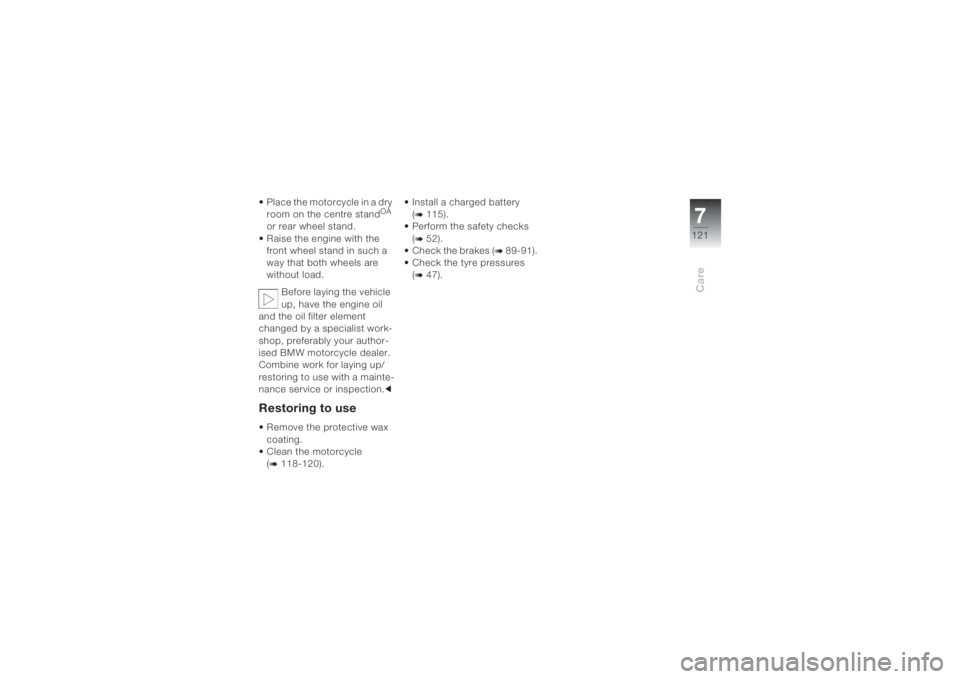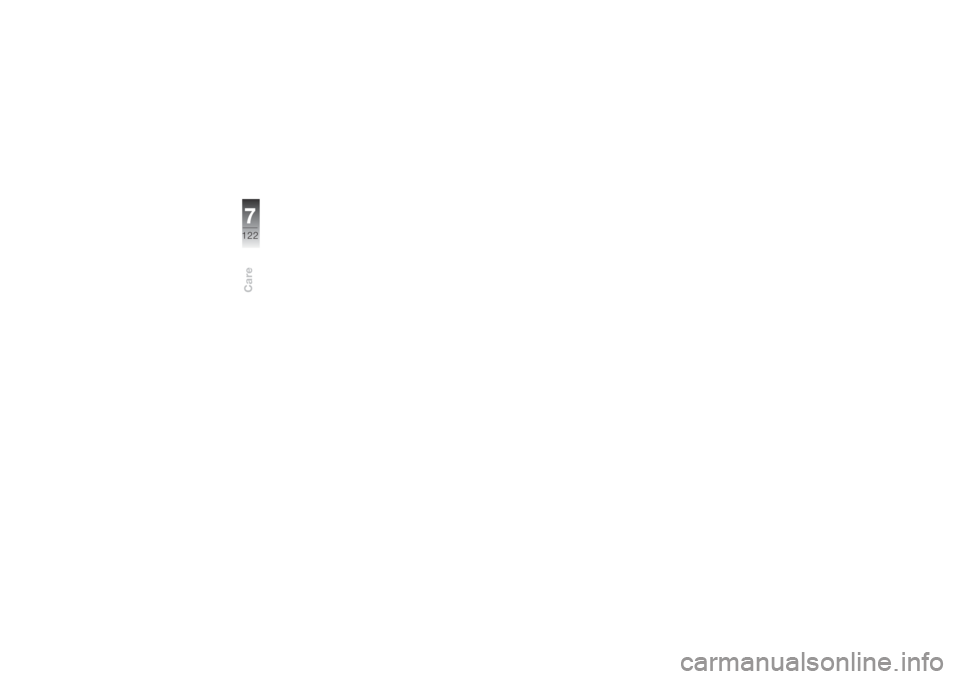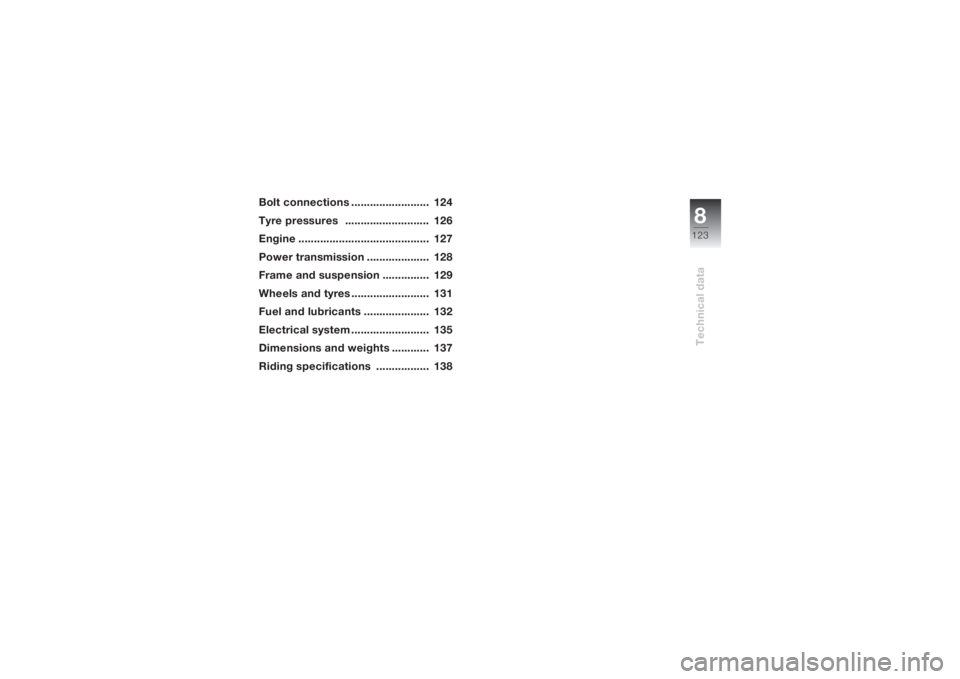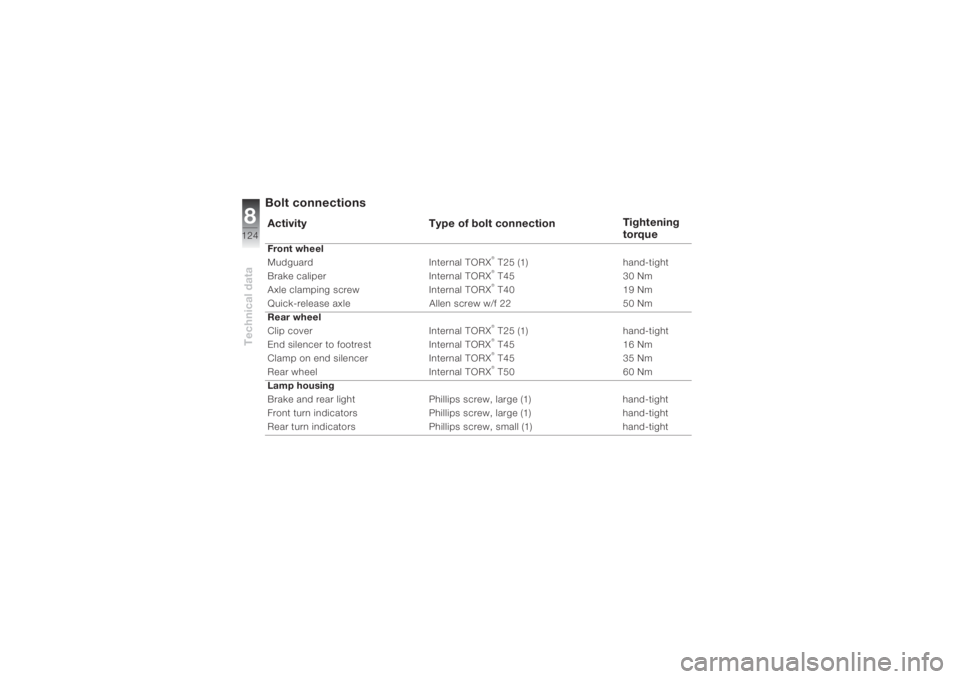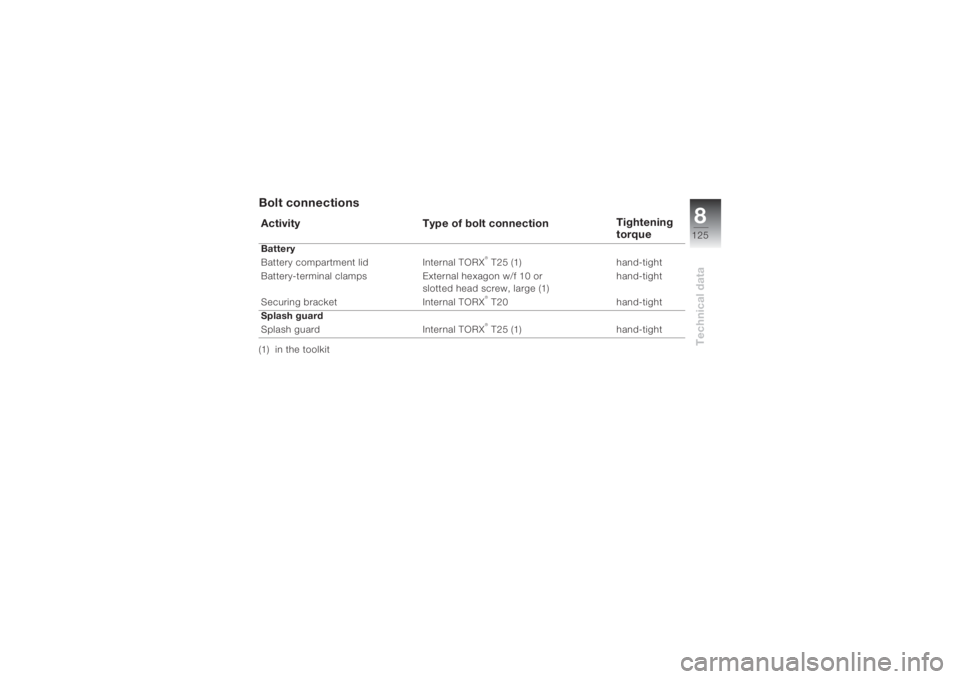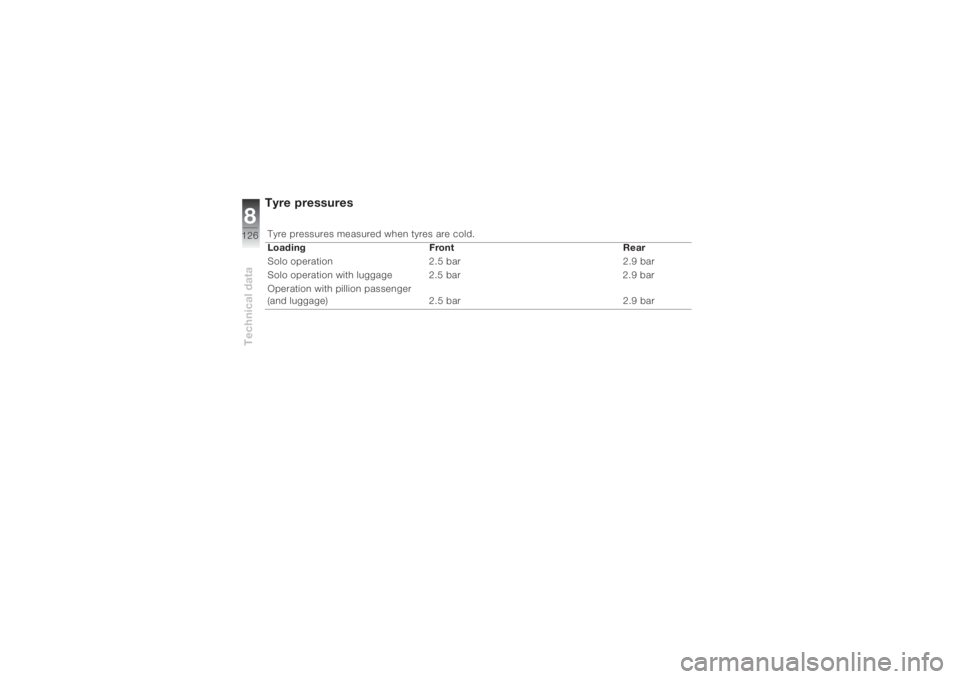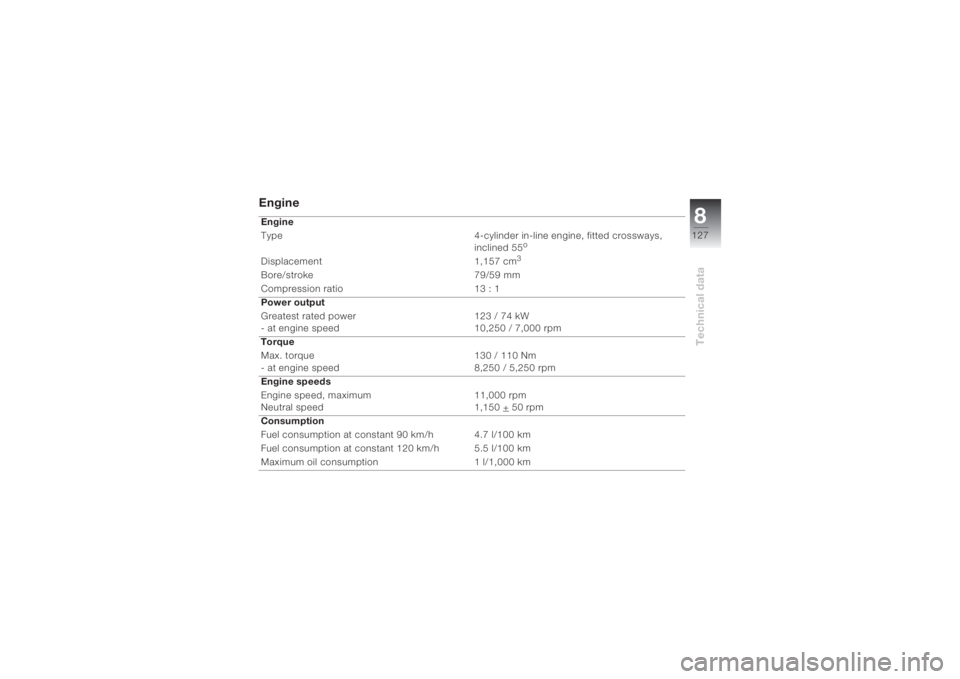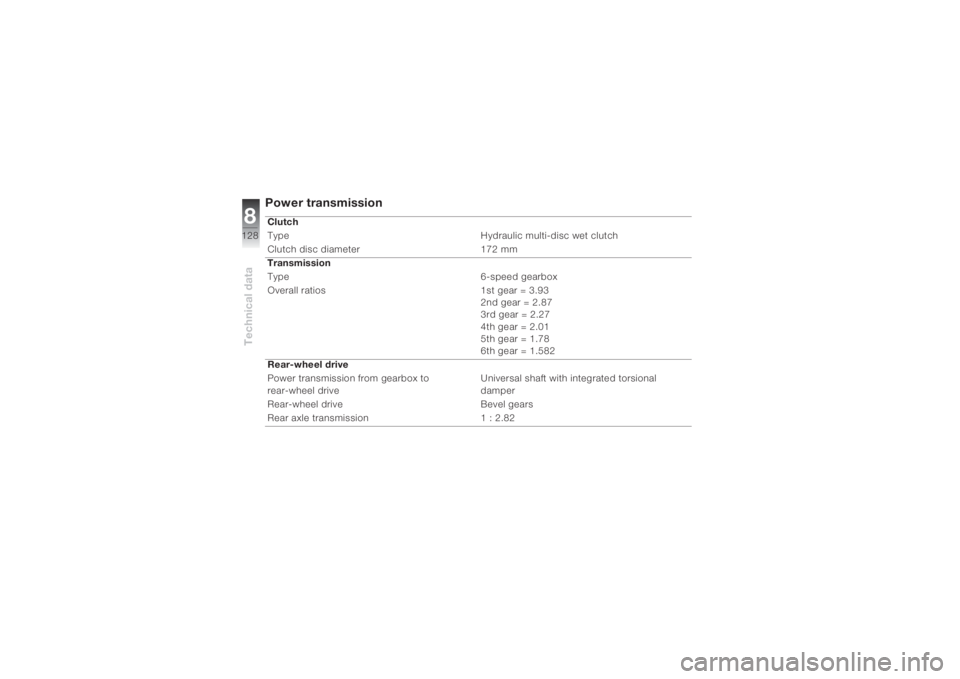BMW MOTORRAD K 1200 S 2004 Rider's Manual (in English)
K 1200 S 2004
BMW MOTORRAD
BMW MOTORRAD
https://www.carmanualsonline.info/img/47/37168/w960_37168-0.png
BMW MOTORRAD K 1200 S 2004 Rider's Manual (in English)
Trending: jump cable, jump start, inflation pressure, fuel, cooling, mirror, coolant reservoir
Page 121 of 162
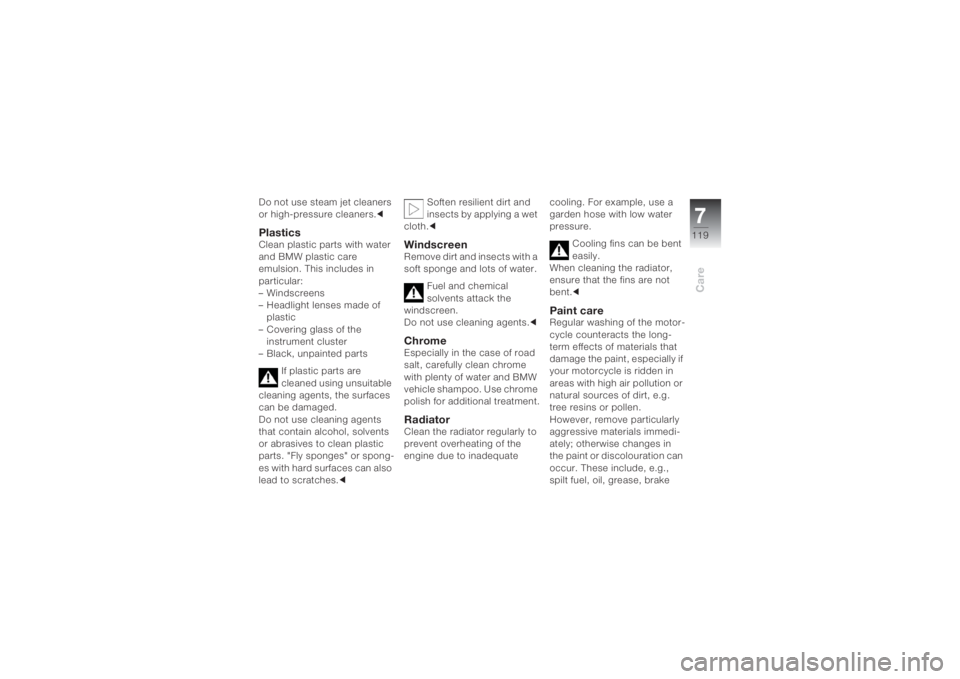
7119
Care
Do not use steam jet cleaners
or high-pressure cleaners.cPlasticsClean plastic parts with water
and BMW plastic care
emulsion. This includes in
particular:
– Windscreens
– Headlight lenses made of
plastic
– Covering glass of the
instrument cluster
– Black, unpainted parts
If plastic parts are
cleaned using unsuitable
cleaning agents, the surfaces
can be damaged.
Do not use cleaning agents
that contain alcohol, solvents
or abrasives to clean plastic
parts. "Fly sponges" or spong-
es with hard surfaces can also
lead to scratches.cSoften resilient dirt and
insects by applying a wet
cloth.c
WindscreenRemove dirt and insects with a
soft sponge and lots of water.
Fuel and chemical
solvents attack the
windscreen.
Do not use cleaning agents.cChromeEspecially in the case of road
salt, carefully clean chrome
with plenty of water and BMW
vehicle shampoo. Use chrome
polish for additional treatment.RadiatorClean the radiator regularly to
prevent overheating of the
engine due to inadequate cooling. For example, use a
garden hose with low water
pressure.
Cooling fins can be bent
easily.
When cleaning the radiator,
ensure that the fins are not
bent.c
Paint careRegular washing of the motor-
cycle counteracts the long-
term effects of materials that
damage the paint, especially if
your motorcycle is ridden in
areas with high air pollution or
natural sources of dirt, e.g.
tree resins or pollen.
However, remove particularly
aggressive materials immedi-
ately; otherwise changes in
the paint or discolouration can
occur. These include, e.g.,
spilt fuel, oil, grease, brake
Page 122 of 162
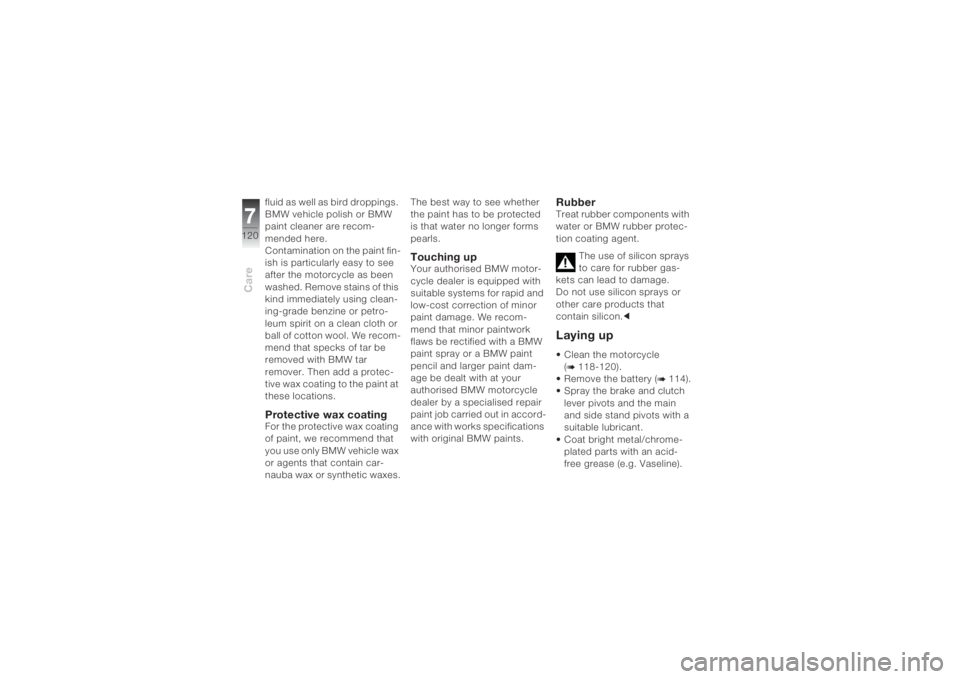
Care7120
fluid as well as bird droppings.
BMW vehicle polish or BMW
paint cleaner are recom-
mended here.
Contamination on the paint fin-
ish is particularly easy to see
after the motorcycle as been
washed. Remove stains of this
kind immediately using clean-
ing-grade benzine or petro-
leum spirit on a clean cloth or
ball of cotton wool. We recom-
mend that specks of tar be
removed with BMW tar
remover. Then add a protec-
tive wax coating to the paint at
these locations.Protective wax coatingFor the protective wax coating
of paint, we recommend that
you use only BMW vehicle wax
or agents that contain car-
nauba wax or synthetic waxes.The best way to see whether
the paint has to be protected
is that water no longer forms
pearls.
Touching upYour authorised BMW motor-
cycle dealer is equipped with
suitable systems for rapid and
low-cost correction of minor
paint damage. We recom-
mend that minor paintwork
flaws be rectified with a BMW
paint spray or a BMW paint
pencil and larger paint dam-
age be dealt with at your
authorised BMW motorcycle
dealer by a specialised repair
paint job carried out in accord-
ance with works specifications
with original BMW paints.
RubberTreat rubber components with
water or BMW rubber protec-
tion coating agent.
The use of silicon sprays
to care for rubber gas-
kets can lead to damage.
Do not use silicon sprays or
other care products that
contain silicon.cLaying up• Clean the motorcycle
(b 118-120).
• Remove the battery (
b 114).
• Spray the brake and clutch
lever pivots and the main
and side stand pivots with a
suitable lubricant.
• Coat bright metal/chrome-
plated parts with an acid-
free grease (e.g. Vaseline).
Page 123 of 162
7121
Care
• Place the motorcycle in a dry
room on the centre stand
OA
or rear wheel stand.
• Raise the engine with the
front wheel stand in such a
way that both wheels are
without load.
Before laying the vehicle
up, have the engine oil
and the oil filter element
changed by a specialist work-
shop, preferably your author-
ised BMW motorcycle dealer.
Combine work for laying up/
restoring to use with a mainte-
nance service or inspection.c
Restoring to use• Remove the protective wax
coating.
•Clean the motorcycle
(b 118-120).• Install a charged battery
(
b 115).
• Perform the safety checks
(b 52).
• Check the brakes (
b 89-91).
• Check the tyre pressures
(
b 47).
Page 124 of 162
Page 125 of 162
8123
Technical data
Bolt connections ......................... 124
Tyre pressures ........................... 126
Engine .......................................... 127
Power transmission .................... 128
Frame and suspension ............... 129
Wheels and tyres ......................... 131
Fuel and lubricants ..................... 132
Electrical system ......................... 135
Dimensions and weights ............ 137
Riding specifications ................. 138
Page 126 of 162
Technical data8124
Bolt connections Activity Type of bolt connectionTightening
torqueFront wheel
Mudguard Internal TORX
® T25 (1) hand-tight
Brake caliper Internal TORX® T45 30 Nm
Axle clamping screw Internal TORX® T40 19 Nm
Quick-release axle Allen screw w/f 22 50 Nm
Rear wheel
Clip cover Internal TORX® T25 (1) hand-tight
End silencer to footrest Internal TORX® T45 16 Nm
Clamp on end silencer Internal TORX® T45 35 Nm
Rear wheel Internal TORX® T50 60 Nm
Lamp housing
Brake and rear light Phillips screw, large (1) hand-tight
Front turn indicators Phillips screw, large (1) hand-tight
Rear turn indicators Phillips screw, small (1) hand-tight
Page 127 of 162
8125
Technical data
Bolt connections(1) in the toolkitActivity Type of bolt connectionTightening
torqueBattery
Battery compartment lid Internal TORX
® T25 (1) hand-tight
Battery-terminal clamps External hexagon w/f 10 or
slotted head screw, large (1)hand-tight
Securing bracket Internal TORX® T20 hand-tight
Splash guard
Splash guard Internal TORX® T25 (1) hand-tight
Page 128 of 162
Technical data8126
Tyre pressures Tyre pressures measured when tyres are cold.
Loading Front Rear
Solo operation 2.5 bar 2.9 bar
Solo operation with luggage 2.5 bar 2.9 bar
Operation with pillion passenger
(and luggage) 2.5 bar 2.9 bar
Page 129 of 162
8127
Technical data
Engine Engine
Type 4-cylinder in-line engine, fitted crossways,
inclined 55
o
Displacement 1,157 cm
3
Bore/stroke 79/59 mm
Compression ratio 13 : 1
Power output
Greatest rated power
- at engine speed123 / 74 kW
10,250 / 7,000 rpm
Torque
Max. torque
- at engine speed 130 / 110 Nm
8,250 / 5,250 rpm
Engine speeds
Engine speed, maximum
Neutral speed11,000 rpm
1,150 +
50 rpm
Consumption
Fuel consumption at constant 90 km/h 4.7 l/100 km
Fuel consumption at constant 120 km/h 5.5 l/100 km
Maximum oil consumption 1 l/1,000 km
Page 130 of 162
Technical data8128
Power transmissionClutch
Type Hydraulic multi-disc wet clutch
Clutch disc diameter 172 mm
Transmission
Type 6-speed gearbox
Overall ratios 1st gear = 3.93
2nd gear = 2.87
3rd gear = 2.27
4th gear = 2.01
5th gear = 1.78
6th gear = 1.582
Rear-wheel drive
Power transmission from gearbox to
rear-wheel driveUniversal shaft with integrated torsional
damper
Rear-wheel drive Bevel gears
Rear axle transmission 1 : 2.82
Trending: sensor, rims, warning lights, roof, clock setting, bulb, ECO mode


